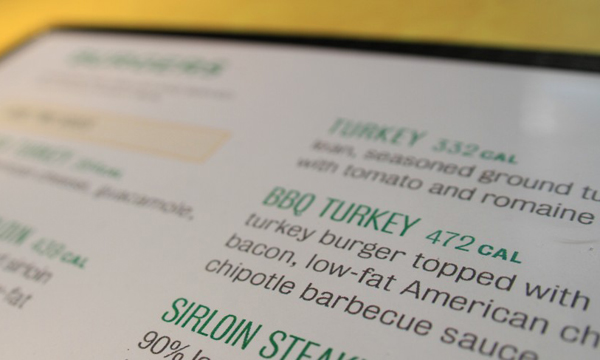
Share On Social!
After seven long years, the FDA’s rules for menu labeling have finally taken effect.
This is big news for Latino families in particular. These families face less access to healthy food options and struggle with higher rates of obesity, diabetes, and certain diseases than non-Latinos, according to a Salud America! research review.
Menu labeling can help Latino and all families make healthier eating choices through clear, easy-to-use nutrition information at the point of ordering.
So how did we get here, and how will menu labeling affect families?
How’d We Get Menu Labeling?
The FDA first proposed menu labeling rules in 2011.
After years of tweaking, menu labeling rules had to overcome one final hurdle in 2017. FDA sought public comments on a possible one-year-delay of rule implementation.

Fortunately, Salud America! supporters spoke up and submitted 12% of the public comments FDA received regarding their one-year delay of menu labeling (332 of 2,714 online comments). Other organizations, like the Center for Science in the Public Interest, stepped up, too.
The menu labeling rules officially took effect May 7, 2018.
What Are the Rules?
FDA now requires chain restaurants and bars, convenience stores, supermarkets, and chain movie theaters display calorie count on menus.
Consumers will have access to calorie and nutrition information at certain chain establishments, in which they must disclose the number of calories contained in standard menu items.
Self-service foods and other foods on display must have calories listed in close proximity and must show clear association with the standard menu item it’s located near.
Additionally, upon request, consumers are also entitled to written nutrition information including total fat, saturated fat, trans fat, cholesterol, sodium, total carbohydrates, sugars, fiber, and protein.
Will This Change Eating Behaviors?
The Academy of Nutrition and Dietetics published a meta-analysis that showed a reduction of 13-31 fewer calories per restaurant visit, according to an article.
FDA Commissioner Dr. Scott Gottlieb took that result further.
“Menu labeling reduces the average number of calories ordered by 30 to 50 calories per visit,” Gottlieb wrote in a blog post. “Consuming just 64 fewer calories per day, on average, would help the nation meet the government’s goal of reducing youth obesity by 2020.”
What’s the Long-Term Impact?
The FDA’s analysis of the new menu labeling rules foresees that these regulations will result in $8 billion total net savings to the healthcare industry over the next 20 years, according to an informative article by Jennifer Ng’andu of the Robert Wood Johnson Foundation.
Ng’andu wrote that another study found that the new menu regulations in restaurants alone could prevent up to 41,000 cases of childhood obesity and save more than $4.6 billion in health care costs over a 10-year period.
“Menu labeling is built on a simple premise—providing families with nutrition information to help them make smart decisions—but the effects can extend well beyond simply seeing and comparing numbers,” Ng’andu wrote. “If we’re better equipped to make healthy decisions, it’s easier to instill healthy habits in our kids, especially from an early age—which will make it easier for them to get proper nutrition and help them avoid obesity or related diseases like type 2 diabetes.”
“And if food retailers see that we are making healthier purchases, they’ll have incentive to elevate the products that match those healthier preferences, because it will be good for their bottom lines.”
By The Numbers
1
Supermarket
for every Latino neighborhood, compared to 3 for every non-Latino neighborhood



